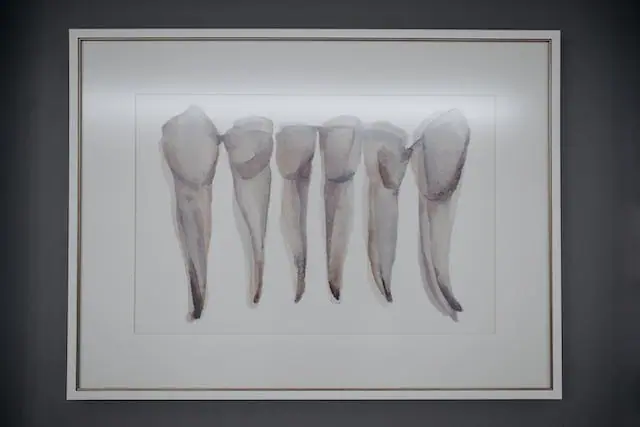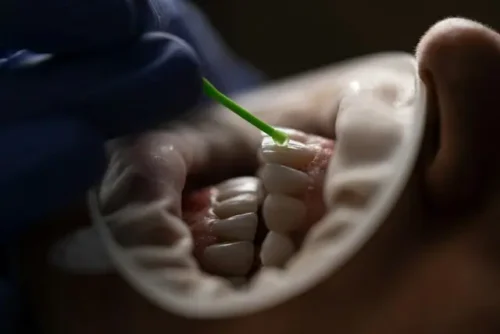
Navigating Tooth Fractures: Understanding and Solutions
A tooth fracture can be a painful and alarming experience. Whether caused by trauma, biting into hard objects, or underlying dental conditions, understanding tooth fractures is essential for finding the right solutions and receiving prompt treatment. In this blog post, we will explore the causes, types, and solutions for tooth fractures. This providing you with valuable information to navigate this dental issue effectively.
Understanding Tooth Fractures
A tooth fracture occurs when a tooth cracks or breaks due to various factors. These fractures can range from minor cracks that only affect the enamel to severe fractures that extend into the root. Common causes of tooth fractures include:
- Trauma or accidents, such as falls or sports injuries.
- Biting into hard objects, like ice, nuts, or hard candies.
- Weakened teeth due to large fillings, decay, or previous dental treatments.
- Bruxism (teeth grinding) or clenching.
Types of Tooth Fractures
Tooth fractures can manifest in different ways, each requiring specific treatment approaches. The common types of tooth fractures include:
- Cracked Tooth: A cracked tooth has a small fracture line that extends from the chewing surface toward the root, but the tooth remains intact. Symptoms may include sensitivity to hot or cold temperatures, pain while biting, or intermittent discomfort.
- Fractured Cusp: This occurs when a piece of the tooth’s chewing surface breaks off, usually around a filling. It may not cause immediate pain but can result in sensitivity or discomfort over time.
- Vertical Root Fracture: A vertical root fracture starts at the root and extends upward towards the crown. It often shows no external signs, making it challenging to diagnose. Symptoms may include localized pain or swelling.
- Split Tooth: A split tooth occurs when a cracked tooth is left untreated, and the fracture progresses to divide the tooth into two separate parts. It often requires extraction, but sometimes a portion of the tooth can be saved with appropriate dental treatment.
- Root Fracture: A root fracture involves a fracture line that occurs horizontally across the root of the tooth. Symptoms may include pain or sensitivity in the affected area, but the tooth may still be functional depending on the severity and location of the fracture.
Solutions for Tooth Fractures
When it comes to treating tooth fractures, the expertise of a reliable dental professional is paramount. In Layton, Utah, you can find proficient dentists experienced in managing a wide range of dental conditions, including tooth fractures. These specialists employ the latest techniques and technologies to ensure optimal outcomes for their patients. Depending on the type and severity of the fracture, treatments may include bonding, veneers, dental crowns, root canals, or in extreme cases, tooth extraction. You can rely on the dentists in Layton to guide you through the treatment process, providing personalized care tailored to your specific needs.
The appropriate solution for a tooth fracture depends on the type, location, and severity of the fracture. Treatment options may include:
- Dental Bonding or Filling: Minor cracks or fractured cusps can often be repaired with dental bonding or fillings. The damaged area is cleaned, and a tooth-colored composite material is applied and shaped to restore the tooth’s appearance and function.
- Dental Crown: For more extensive fractures or weakened teeth, a dental crown may be recommended. Crowns are custom-made caps that cover the entire visible portion of the tooth, providing protection and support.
- Root Canal Therapy: If a fracture extends into the pulp of the tooth, root canal therapy may be necessary to remove the damaged tissue and prevent infection. After the root canal, a dental crown is typically placed to strengthen and protect the tooth.
- Tooth Extraction and Replacement: In cases of severe fractures that cannot be saved, tooth extraction followed by replacement options, such as dental implants, bridges, or dentures, may be considered.
Read More: Four Dental Procedures You Can Opt for a Great Smile
Preventive Measures for Tooth Fractures
While accidents or trauma cannot always be prevented, taking certain precautions can help reduce the risk of tooth fractures:
- Avoid biting or chewing on hard objects.
- Wear mouthguards during sports activities.
- Practice good oral hygiene to maintain strong and healthy teeth.
- Address any underlying dental conditions, such as tooth decay or bruxism, promptly.
Tooth fractures can be a distressing experience, but understanding the causes, types, and solutions for tooth fractures is crucial for finding the right treatment approach. Whether through dental bonding, crowns, root canal therapy, or replacement options, dental professionals can provide effective solutions tailored to your specific situation.
Remember, if you experience a tooth fracture or suspect any dental issues, it’s essential to consult with a dentist promptly to receive timely and appropriate treatment.


